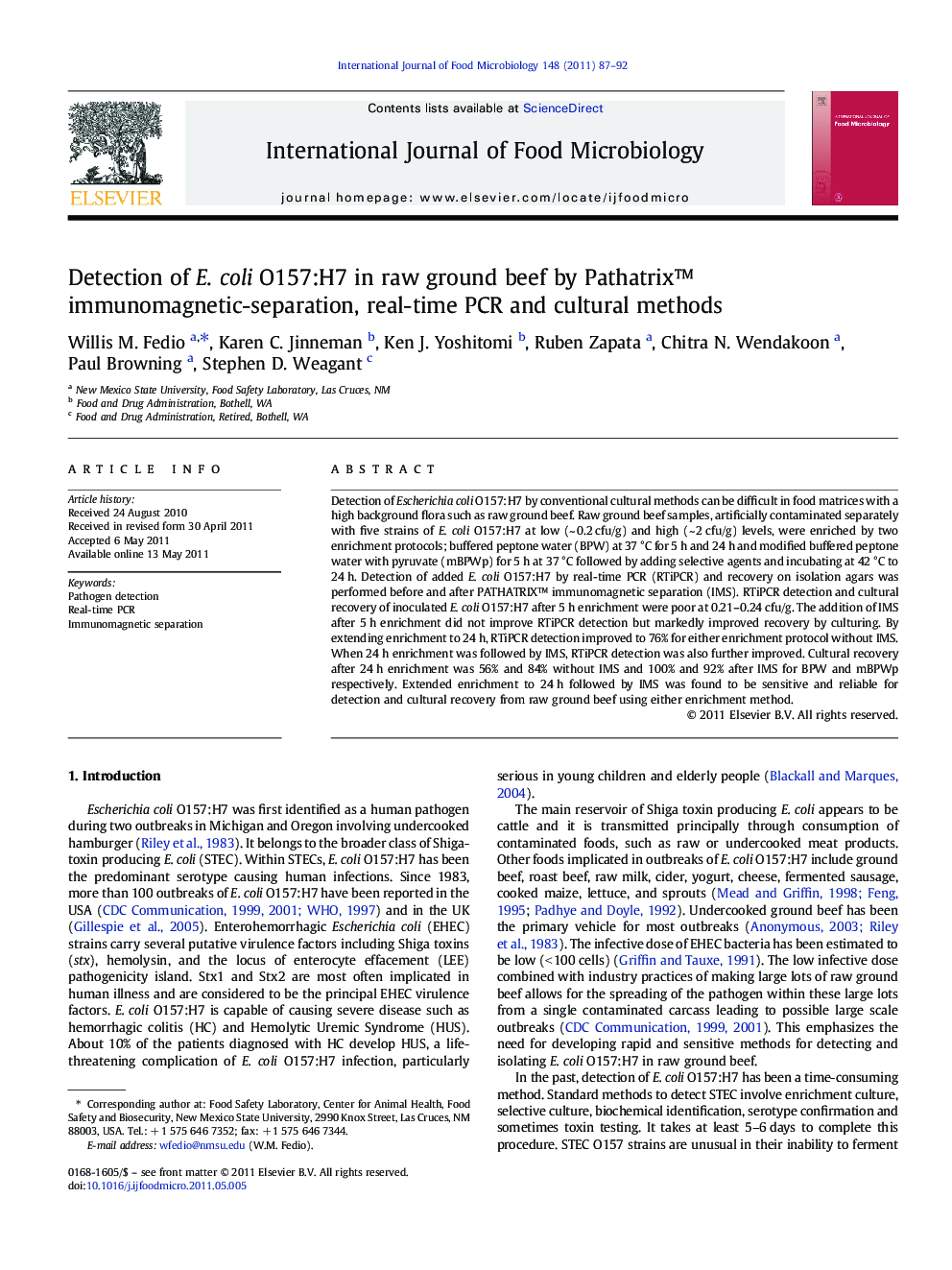| Article ID | Journal | Published Year | Pages | File Type |
|---|---|---|---|---|
| 4367980 | International Journal of Food Microbiology | 2011 | 6 Pages |
Detection of Escherichia coli O157:H7 by conventional cultural methods can be difficult in food matrices with a high background flora such as raw ground beef. Raw ground beef samples, artificially contaminated separately with five strains of E. coli O157:H7 at low (~ 0.2 cfu/g) and high (~ 2 cfu/g) levels, were enriched by two enrichment protocols; buffered peptone water (BPW) at 37 °C for 5 h and 24 h and modified buffered peptone water with pyruvate (mBPWp) for 5 h at 37 °C followed by adding selective agents and incubating at 42 °C to 24 h. Detection of added E. coli O157:H7 by real-time PCR (RTiPCR) and recovery on isolation agars was performed before and after PATHATRIX™ immunomagnetic separation (IMS). RTiPCR detection and cultural recovery of inoculated E. coli O157:H7 after 5 h enrichment were poor at 0.21–0.24 cfu/g. The addition of IMS after 5 h enrichment did not improve RTiPCR detection but markedly improved recovery by culturing. By extending enrichment to 24 h, RTiPCR detection improved to 76% for either enrichment protocol without IMS. When 24 h enrichment was followed by IMS, RTiPCR detection was also further improved. Cultural recovery after 24 h enrichment was 56% and 84% without IMS and 100% and 92% after IMS for BPW and mBPWp respectively. Extended enrichment to 24 h followed by IMS was found to be sensitive and reliable for detection and cultural recovery from raw ground beef using either enrichment method.
Research highlights► RTi-PCR detection and cultural recovery from ground beef can be challenging. ► Competing microorganisms in enrichments make detection and isolation difficult. ► Low level E. coli O157:H7 detection improved by increased enrichment time and IMS. ► IMS assists cultural recovery of E. coli O157:H7 on selective agars.
